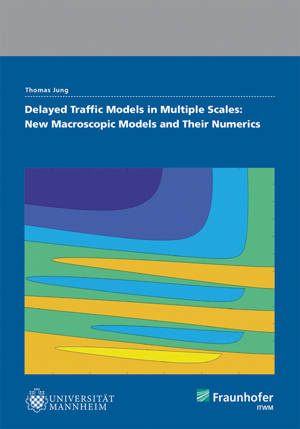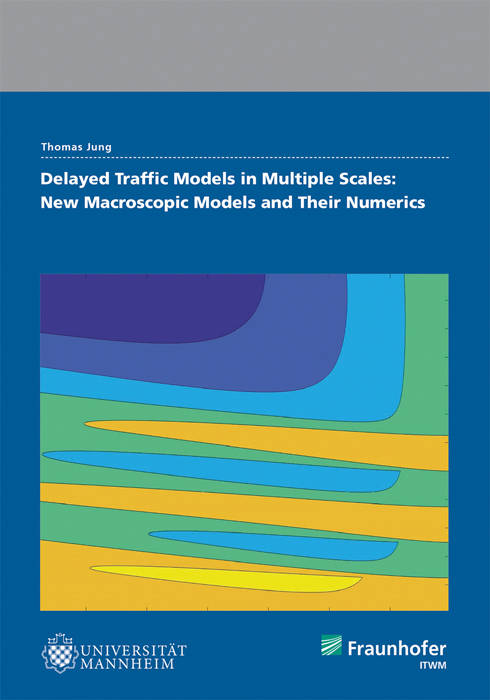
- Afhalen na 1 uur in een winkel met voorraad
- Gratis thuislevering in België vanaf € 30
- Ruim aanbod met 7 miljoen producten
- Afhalen na 1 uur in een winkel met voorraad
- Gratis thuislevering in België vanaf € 30
- Ruim aanbod met 7 miljoen producten
Zoeken
Delayed Traffic Models in Multiple Scales: New Macroscopic Models And Their Numerics.
Thomas Jung
Paperback | Engels
€ 64,45
+ 128 punten
Omschrijving
Traffic becomes an ever more important topic in modern days, as it plays a vital role in economics, environmental issues and the daily life of most people. The simulation of traffic with mathematical models dates back to at least the 1950s. In that, microscopic models with explicit time delays, modeling the reaction times of both the driver and the car, are well known.
Starting from them, we derive new macroscopic traffic models, which keep this explicit time delay. This leaves us with partial differential equations with explicit time delay, a hardly investigated type of differential equations.
In this thesis we take a closer look at the analysis and especially the numerics for this models, show some properties of the equations and the numerical discretizations, and compare them to well-known, undelayed models.
Finally, we will fit these models to real data and run simulations, comparing the behavior to undelayed models. Also, we compare the results to real measurements, showing that the simulations are often closer to real world traffic than undelayed simulations.
Starting from them, we derive new macroscopic traffic models, which keep this explicit time delay. This leaves us with partial differential equations with explicit time delay, a hardly investigated type of differential equations.
In this thesis we take a closer look at the analysis and especially the numerics for this models, show some properties of the equations and the numerical discretizations, and compare them to well-known, undelayed models.
Finally, we will fit these models to real data and run simulations, comparing the behavior to undelayed models. Also, we compare the results to real measurements, showing that the simulations are often closer to real world traffic than undelayed simulations.
Specificaties
Betrokkenen
- Auteur(s):
- Uitgeverij:
Inhoud
- Aantal bladzijden:
- 120
- Taal:
- Engels
Eigenschappen
- Productcode (EAN):
- 9783839617083
- Uitvoering:
- Paperback
- Afmetingen:
- 147 mm x 8 mm
- Gewicht:
- 186 g

Alleen bij Standaard Boekhandel
+ 128 punten op je klantenkaart van Standaard Boekhandel
Beoordelingen
We publiceren alleen reviews die voldoen aan de voorwaarden voor reviews. Bekijk onze voorwaarden voor reviews.











